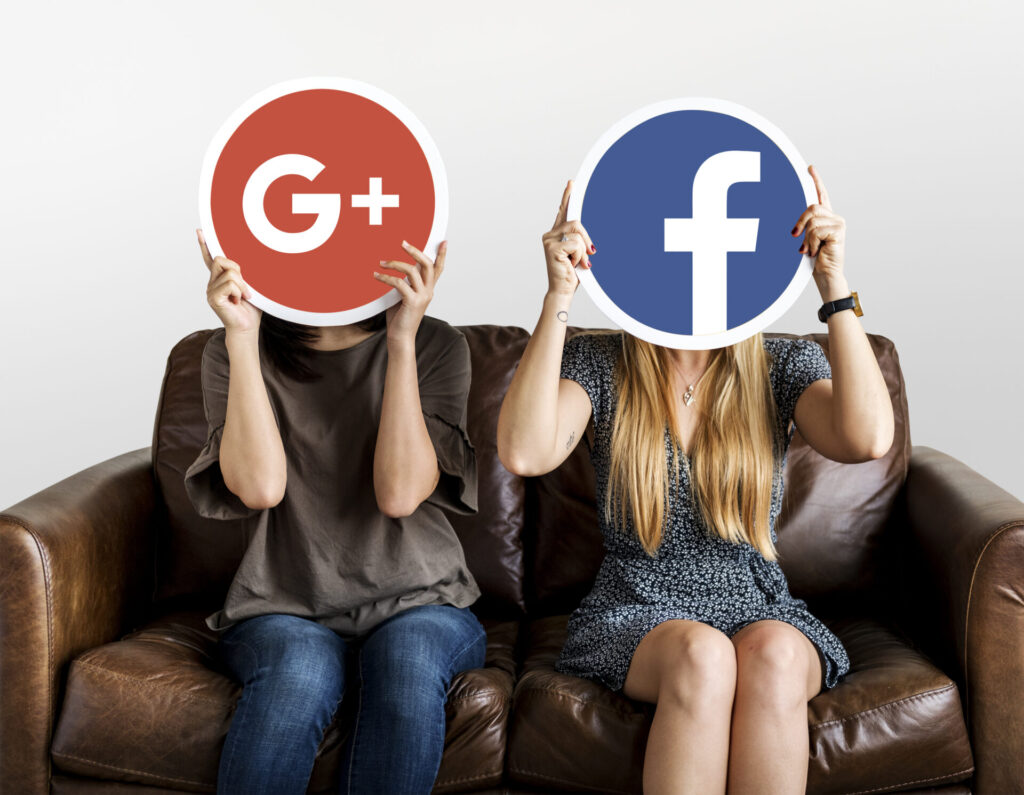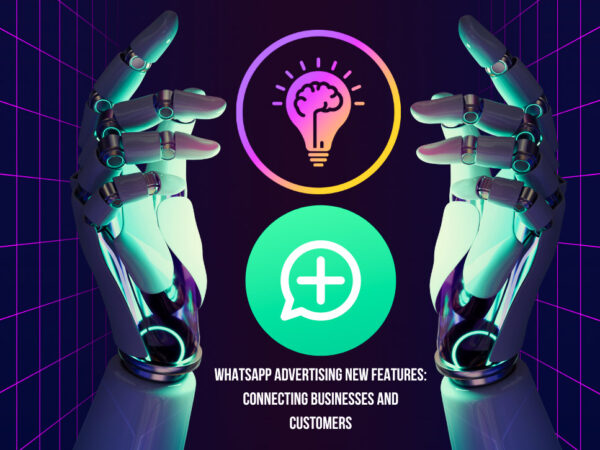
Facebook Ads vs. Google Ads: Which One is Better For Lead Generation?
Selecting between Facebook Ads and Google Ads is a decision that can significantly impact your lead generation efforts. The choice depends on various factors, such as your conversion budget and the resources available to manage your ad campaigns.
In this article, we will explore the distinctions between Facebook Ads and Google Ads, focusing on their suitability for enhancing lead generation for your business.
What is Google Ads?
Google Ads, previously known as Google AdWords, is a pay-per-click (PPC) advertising platform where businesses pay for advertisements to appear on various platforms.
These ads are displayed in Google search results, as well as on other websites through Google’s Search Partners or Display Network.
At its core, Google Ads operates through the Search Network, allowing advertisers to present their ads to users actively searching for products or services related to their business.
Keywords play a central role in this, as advertisers select relevant keywords that trigger their ads when a user searches for related queries.
What are Facebook Ads?
Similar to Google, Facebook Ads are paid ads that – you guessed it – appear on Facebook.
Facebook Ads can appear in a number of different places such as:
– Facebook Newsfeed
– Instagram Newsfeed
– Facebook Marketplace
– Video Feeds
– Right-hand column
– Messenger inbox
Facebook Ads are paid advertisements that appear on Facebook and its affiliated platforms. For the purposes of this article, we will focus primarily on Facebook Newsfeed placements, which constitute a substantial portion of Facebook’s advertising business.
With a massive user base, Facebook offers a competitive landscape for businesses to advertise and generate leads.
Google Ads vs. Facebook Ads – How They Support Lead Generation
The primary distinction between Facebook Ads and Google Ads lies in how they present products or services to consumers. Facebook Ads target users based on their interests, while Google Ads are tailored to users actively searching for specific products or information.
On Facebook, users may not necessarily have immediate purchase intent when encountering your ad. Lead generation on Facebook often involves capturing contact information for subsequent marketing efforts.
In contrast, users on Google are actively seeking information, products, or services, making it a fertile ground for immediate lead generation and conversions.
Now, let’s delve deeper into the specifics of both platforms.
Google Ads, with its paid search-oriented offerings, enables business owners to target users based on the search queries they enter on Google. This aligns with high-intent lead generation.
Facebook Ads, on the other hand, allow you to target your ads based on users’ behaviors, preferences, and demographics. Unlike Google Ads, it’s not dependent on a user’s search query. Facebook Ads offer a broad range of targeting options, allowing advertisers to reach users with specific characteristics and interests.
Lead Generation Objectives
One of the initial distinctions between Facebook Ads and Google Ads is the primary objective. Facebook Ads are chosen by businesses aiming to capture the intent of users actively searching for products or services, engage with a specific audience, and drive interaction making them ideal for lead generation.
On the contrary, Google Ads, functioning within the Google Search Network and Google Display Network, primarily cater to businesses aiming to capture the intent of users actively searching for products or services, making them ideal for lead generation.
Ad Placement for Lead Generation
Facebook Ads are integrated within the Facebook platform, which includes Facebook itself, Instagram, and the Audience Network. This grants advertisers the ability to engage users during their social and leisure time, targeting them based on their interests, demographics, and online behaviors.
Google Ads primarily consist of text-based or display ads displayed on Google’s search engine results pages and partner websites. This is advantageous for capturing users who are actively searching for information relevant to your business, making it a powerful tool for lead generation.
Ad Format for Lead Generation
The format of ads on Facebook and Google varies significantly. Facebook Ads offer a diverse range of ad formats, including image and video ads, carousel ads, slideshow ads, and more. These visually engaging formats are designed to capture users’ attention within their social feeds.
Google Ads primarily feature text-based ads, although image and video ad options are also available through the Google Display Network. The choice of format often depends on your lead generation goals and your target audience’s preferences.
Targeting Options for Lead Generation
Both platforms offer robust targeting options, but they diverge in terms of user intent and granularity. Facebook Ads provide intricate targeting capabilities based on user interests, behaviors, demographics, and location.
Additionally, you can create custom audiences and lookalike audiences to reach users with similar characteristics to your existing customers.
Google Ads, on the other hand, rely primarily on keyword targeting and user search intent. Advertisers can leverage keywords and match types to align with user queries, allowing them to refine their target audience based on search terms.
Cost and Bidding for Lead Generation
The cost structure and bidding mechanisms on Facebook and Google Ads differ. Facebook Ads operate on a cost-per-click (CPC) or cost-per-thousand-impressions (CPM) basis, where advertisers set budgets and bid amounts to compete for ad space.
Google Ads operate on a pay-per-click (PPC) model, where advertisers are charged when a user clicks on their ad. Bidding on Google Ads can be more complex, factoring in ad quality score, keyword competitiveness, and maximum bid amounts.
Measuring Lead Generation Success
Both Facebook and Google Ads provide extensive performance metrics to evaluate the effectiveness of your lead generation campaigns. However, the specific metrics and their significance differ.
Facebook Ads emphasize engagement-oriented metrics such as likes, shares, comments, and click-through rates (CTR).
Google Ads prioritize metrics related to user intent and conversion, such as click-through rate (CTR), conversion rate, and return on ad spend (ROAS).
The choice of metrics should align with your lead generation objectives and what you value most when assessing success.
Advertisers’ Control and Flexibility for Lead Generation
Facebook Ads offer a user-friendly interface and straightforward campaign setup, making them accessible to businesses of all sizes. Advertisers can easily create ads and manage budgets.
Google Ads, while versatile, can be more intricate and have a steeper learning curve. Advertisers have greater control over targeting and bidding, but it may require a deeper understanding of keywords and search intent.
Timing of Ad Placement for Lead Generation
A notable difference between the two platforms is ad placement timing. Facebook Ads allow advertisers to schedule ads during specific times of the day or week, optimizing reach during peak engagement periods.
Google Ads run continuously, relying on real-time bidding to determine when your ads are displayed. This distinction is crucial for businesses aiming to reach their audience at the most opportune moments for lead generation.
Mobile vs. Desktop for Lead Generation
Both platforms offer the flexibility to target users on mobile and desktop devices. Facebook’s strong mobile presence through its app and Instagram makes it a popular choice for mobile advertising.
Google Ads have a substantial reach on desktop searches, making them a preferred option for businesses targeting users seeking detailed information or making complex purchasing decisions.
Lead Generation and Audience Engagement
Facebook Ads excel in engaging users with visual content and storytelling.
Google Ads are more intent-driven and serve users actively seeking information. They can be highly effective in driving immediate actions, such as lead capture or conversions.
Conclusion
In the Facebook Ads vs. Google Ads debate, there isn’t a definitive winner. The choice between these advertising giants depends on your business goals, target audience, budget, and the nature of your products or services.
Facebook Ads are the best for lead generation as well as brand building, while Google Ads are well-suited for capturing users actively searching for what you offer.
Ultimately, many businesses find success by strategically using both platforms, harnessing the unique strengths of Facebook and Google to create a comprehensive advertising strategy that achieves their desired results.
Need help creating Facebook Ads or Google ads for your business? Then schedule a call with our PPC experts. Zavops can help.
Ready to work smarter, not harder? Try Zavops today – Australia’s leading Performance Marketing Agency.


